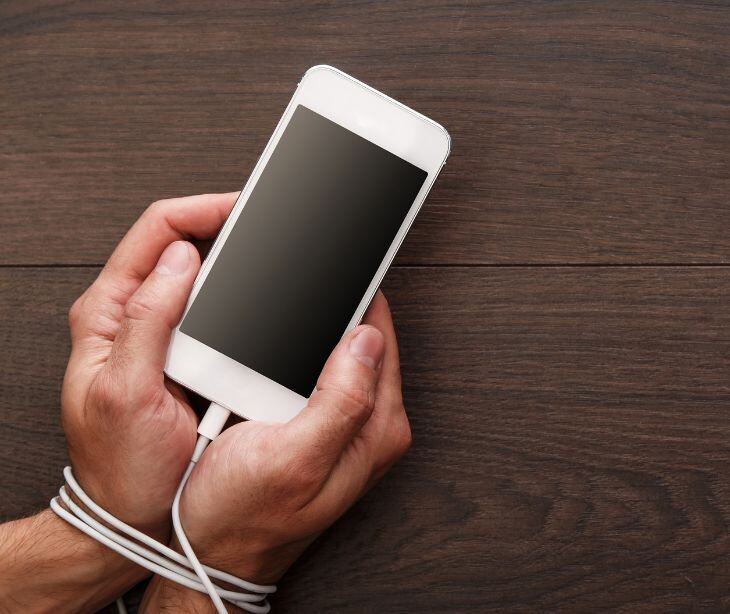4 min read
The function of email in technological addiction treatment
Kirsten Peremore
August 13, 2024

Email can be used in technological addiction treatment once the patient has shown they can handle digital communication responsibly, helping to support their recovery by offering a controlled and secure way to stay connected with their therapist.
The nature of technological addiction
Technological addiction manifests as a compulsive need to use digital devices such as smartphones, computers, or tablets, often disrupting daily life. Affected individuals find themselves excessively engaged in activities like social media, gaming, or internet browsing. The compulsion extends to constant interaction through various online platforms, leading to disruptions in daily functioning.
Often, this form of addiction coexists with other mental health challenges, including anxiety and depression. According to the American Psychiatric Association, “Technology addiction can potentially involve various forms of online activity including social media, gaming, gambling, problematic use of online pornography, and others.”
Treatment becomes necessary when technological addiction causes considerable damage to an individual’s social, academic, or professional life. Signs that professional help is needed include neglected relationships, deteriorating performance at school or work, or a decline in physical health. Withdrawal symptoms such as irritability or anxiety when devices are inaccessible may also signal the severity of the addiction.
The treatment of technological addiction
There is a vast and ever changing array of technological addictions due to constant innovation. Psychiatric treatment has also, therefore, adopted treatment approaches to the most common forms, which are often adjusted as related cases are introduced.
These include:
Treatment options for internet gaming disorder (IGD)
Medications show increasing promise for managing IGD, with drugs initially developed for ADHD, depression, and anxiety—like methylphenidate, atomoxetine, bupropion, and escitalopram—being the most studied. Early results are encouraging; however, more research is necessary to confirm these findings. Notably, several studies and trials have demonstrated the effectiveness of these medications. For example one study showed that, “An 8-week course of methylphenidate was shown to reduce IGD symptoms in a pretest–post test study.”
Bupropion, tested in different durations (6 and 12 weeks), notably decreased video game cravings and usage. Furthermore, head-to-head comparisons of methylphenidate, bupropion, and escitalopram suggest they all effectively reduce IGD symptoms.
Psychotherapeutic interventions are necessary to treat IGD. Cognitive Behavioral Therapy (CBT), especially tailored for internet addictions (CBT-IA), has been identified as particularly effective. Motivational Interviewing (MI) has also shown success in treating IGD, often producing results in fewer sessions compared to other methods.
Social media addiction (SMA) treatments
The prevalence and integration of social media into daily life, particularly among youth, underline the necessity for effective treatment strategies. Despite limited literature, viewing SMA through the lens of general internet addiction has opened avenues for applying well-researched interventions.
CBT stands out as a beneficial approach, reducing the time spent on social media and alleviating associated anxiety and depression symptoms. The specialized CBT-IA appears to yield even better results.
Cybersex and online pornography challenges
The widespread availability and the private nature of online sexual activities make cybersex and online pornography unique challenges. Psychotherapeutic options, including Acceptance and Commitment Therapy (ACT) and CBT, have shown effectiveness.
However, not all treatments have been universally effective. Medications like paroxetine and naltrexone have also been used, suggesting some potential, although psychotherapeutic interventions remain the preferred first-line treatment due to the sparse evidence supporting pharmacological options.
Online shopping addiction (OSA) insights
Online shopping addiction encompasses a range of behaviors influenced by psychological factors such as low self-esteem and high impulsivity. CBT has proven effective in reducing symptoms of OSA. Other therapeutic methods like cue-exposure therapy and psychodrama also offer potential benefits, helping patients explore and alter their buying behaviors.
The role of email in treatment
Email provides a seamless and continuous form of contact that isn't constrained by office hours. Patients have the flexibility to write to their therapists at times that work best for them, especially during moments of vulnerability or intense cravings. In response, therapists can offer timely support, resources, and guidance.
However, integrating email into the treatment of technological addictions presents certain risks. A concern is that email might encourage an over-reliance on digital communication in patients who are already struggling with excessive digital use. Frequent email checks could unintentionally reinforce the compulsive online behaviors that the treatment aims to reduce. It is necessary to assess patient on a case by case basis to determine whether or not email communication is a possible resource for their treatment plan.
The best time to introduce email in the treatment of technological addiction is after establishing a solid foundation of trust and understanding between the therapist and patient. This usually happens after initial face-to-face interactions, where the therapist has assessed the patient's specific needs and readiness for digital communication. Introducing email should come at a point where the patient demonstrates a stable commitment to recovery and has started to show an ability to manage their technology use responsibly.
The best practices to use it effectively include:
- Start by selecting a HIPAA compliant email service like Paubox.
- Agree on specific times of the day when the patient is permitted to check and respond to emails, such as once in the morning and once in the late afternoon.
- Develop a template for emails that includes sections for different types of communication (questions, homework, feedback) to keep emails organized and focused.
- Send specific, timed homework related to treatment goals that patients can complete and return via email, ensuring tasks are manageable and do not require prolonged screen time.
- Introduce exercises that require the patient to reflect on their need to open and respond to emails, encouraging conscious decision-making and reducing impulsivity.
- Regularly schedule sessions to review email communications together, discussing tone, content, and the emotional impact of these interactions.
- Know when email is not an option and when to switch approaches. Each patient is different and at times what works for one could cause harm to another.
FAQs
Is consent necessary prior to emailing patients?
Yes, consent is necessary prior to emailing patients to ensure they agree to this form of communication and understand its privacy implications.
Examples of boundaries to set when using email as part of a treatment plan?
Examples of boundaries when using email in a treatment plan include specifying the types of content appropriate for email.
What makes an email HIPAA compliant?
An email is HIPAA compliant when it uses secure, encrypted transmission methods, ensures that only authorized persons can access the information.
Subscribe to Paubox Weekly
Every Friday we'll bring you the most important news from Paubox. Our aim is to make you smarter, faster.




